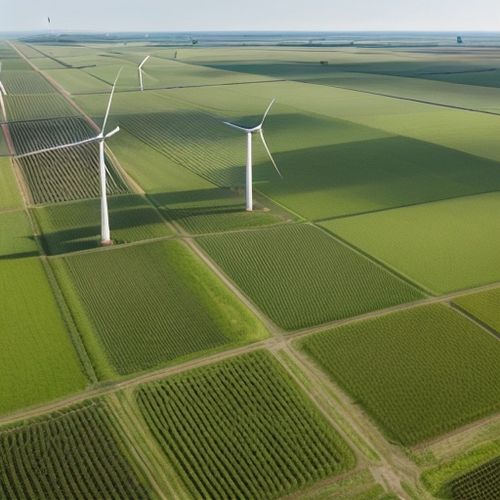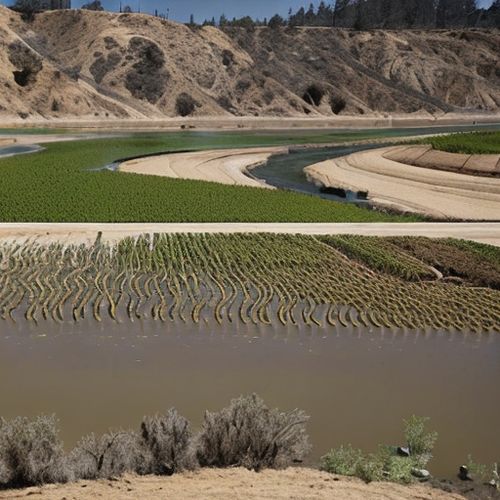The California water restrictions have become a defining feature of life in the Golden State, as years of drought and shifting climate patterns force residents and policymakers to confront the reality of limited water resources. What began as temporary measures has evolved into a long-term strategy to manage water use, with far-reaching implications for agriculture, urban development, and daily life. The state's approach to conservation is not just about reducing consumption—it's a reimagining of how water is valued, allocated, and preserved for future generations.
At the heart of California's water crisis is a simple but harsh truth: the demand for water far outstrips the supply. Decades of population growth, agricultural expansion, and industrial development have placed immense pressure on the state's rivers, reservoirs, and groundwater basins. Climate change has exacerbated the problem, with warmer temperatures reducing snowpack—a critical natural reservoir—and increasing evaporation rates. The result is a system under strain, where even average rainfall years are no longer sufficient to replenish what has been used.
The latest round of restrictions targets outdoor water use, which accounts for a significant portion of residential consumption. In many communities, watering lawns is now limited to specific days and times, with hefty fines for violations. Some cities have gone further, offering rebates for replacing grass with drought-tolerant landscaping. These measures have transformed the visual landscape of suburban California, as lush green lawns give way to native plants, gravel, and artificial turf. The shift has not been without controversy, with some homeowners resisting what they see as an infringement on personal property rights.
Agriculture, which uses approximately 80% of California's developed water supply, faces its own set of challenges under the new regulations. Farmers are being pushed to adopt more efficient irrigation methods, such as drip systems and soil moisture monitoring. Certain water-intensive crops, like almonds and alfalfa, have come under particular scrutiny. While some agricultural operations have adapted successfully, others struggle with the costs of conversion or the limitations imposed on their water allocations. The tension between environmental concerns and economic realities plays out daily in the state's Central Valley, where entire communities depend on farming for their livelihood.
Urban water districts are implementing tiered pricing structures that charge higher rates as usage increases, a strategy aimed at encouraging conservation while maintaining access to essential needs. Low-income households receive protections through discounted rates or exemptions, but the system has faced criticism for placing disproportionate burdens on middle-class families with larger properties. Meanwhile, businesses from car washes to data centers are required to submit water efficiency plans and report their usage—a level of scrutiny that reflects water's growing status as a monitored commodity rather than an unlimited resource.
The restrictions have spurred innovation across multiple sectors. Water recycling projects, once considered impractical or unappealing, are gaining traction. Orange County's groundwater replenishment system, which purifies wastewater to drinking standards, has become a model for other regions. Desalination plants, though energy-intensive and expensive, are being constructed along the coast to tap into the Pacific Ocean's vast reserves. Even at the household level, technologies like smart meters and leak detection systems are helping residents track and reduce their consumption with unprecedented precision.
Public awareness campaigns have played a crucial role in changing behaviors. The iconic "Brown Is the New Green" slogan captured the cultural shift toward accepting drought-resistant landscapes. School programs teach children about water conservation through hands-on activities, creating generational change in attitudes. Social media challenges encourage residents to share their water-saving tips, turning conservation into a community effort rather than a government mandate. This cultural transformation may prove as important as any regulation in ensuring California's water future.
Legal battles over water rights continue to shape the implementation of restrictions. Senior water rights holders, often agricultural operations dating back generations, have challenged attempts to curtail their allocations. Native American tribes are asserting their rights to water for cultural and sustenance fishing. Environmental groups push for stronger protections for endangered species that depend on fragile aquatic ecosystems. These competing claims reveal the complex web of laws, treaties, and policies that govern every drop flowing through California's intricate water delivery systems.
As the restrictions enter their next phase, questions remain about their long-term effectiveness and equity. Some experts argue that focusing on urban conservation—while politically popular—does little to address the agricultural sector's disproportionate usage. Others warn that without addressing groundwater overdraft and infrastructure leaks, surface water restrictions merely treat symptoms rather than causes. The coming years will test whether California's approach can achieve sustainable water management or if more radical solutions will be necessary as climate change intensifies.
The water restrictions represent more than just rules—they signify a fundamental shift in California's relationship with its most precious resource. What began as emergency measures have become permanent features of life in the West's most populous state. The lessons learned here may well preview challenges that other regions will face as global water scarcity becomes increasingly urgent. For Californians, adapting to this new reality requires not just compliance with regulations, but a rethinking of values, priorities, and what it means to live in balance with a changing environment.

By Laura Wilson/Apr 14, 2025

By Joshua Howard/Apr 14, 2025

By John Smith/Apr 14, 2025

By George Bailey/Apr 14, 2025

By Thomas Roberts/Apr 14, 2025

By Amanda Phillips/Apr 14, 2025

By Daniel Scott/Apr 14, 2025

By John Smith/Apr 14, 2025

By Amanda Phillips/Apr 14, 2025

By Christopher Harris/Apr 14, 2025

By Eric Ward/Apr 14, 2025

By Eric Ward/Apr 14, 2025

By David Anderson/Apr 14, 2025

By Thomas Roberts/Apr 14, 2025

By Grace Cox/Apr 14, 2025

By George Bailey/Apr 14, 2025

By Ryan Martin/Apr 14, 2025

By Thomas Roberts/Apr 14, 2025

By Samuel Cooper/Apr 14, 2025

By Rebecca Stewart/Apr 14, 2025